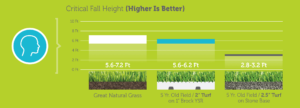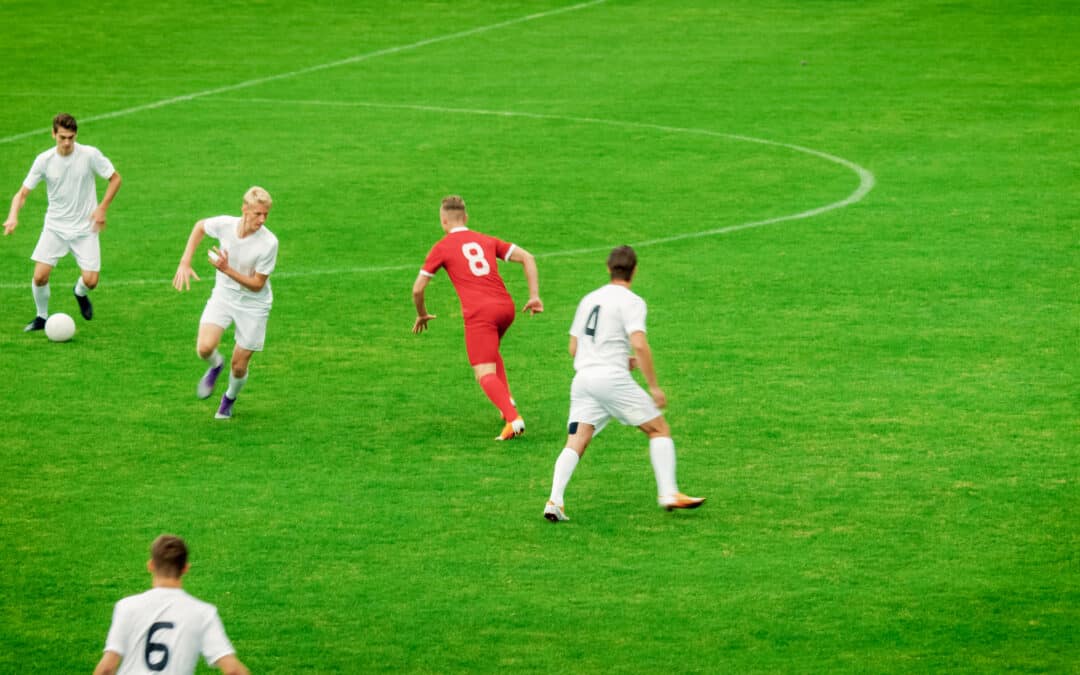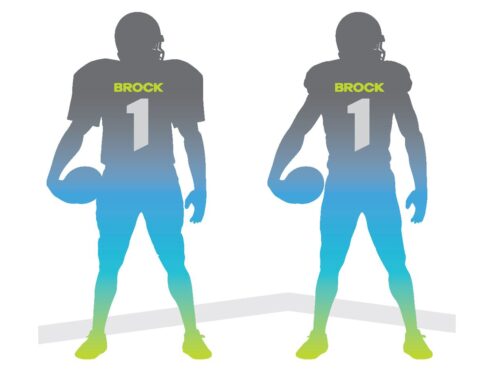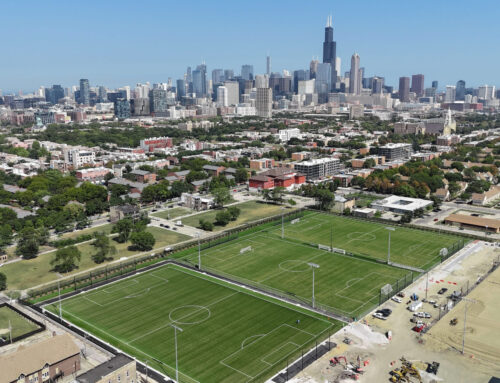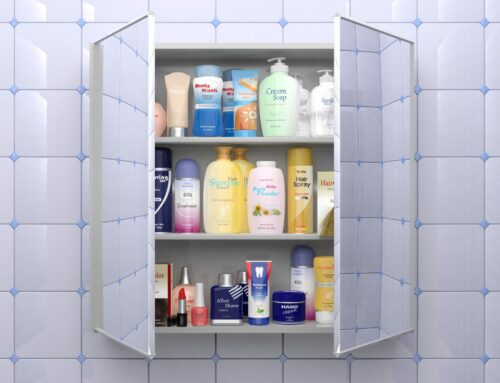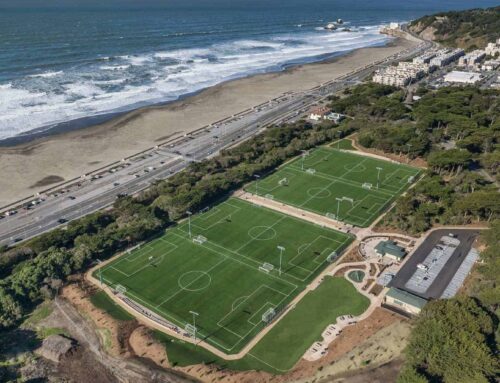Studies have shown most athletes prefer playing on quality natural grass fields. The most notable and public disdain for artificial turf comes from the US Women’s National Soccer Team. Shortly after their victory in the 2015 World Cup, the team cancelled a match at Aloha Stadium in Hawaii due to large rips and holes in the field. Fast forward to today, and the announcement that the 2019 and 2022 Women’s World Cups would only be hosted exclusively on natural grass fields was celebrated by many players and fans alike.
Their aversion to competing on artificial turf has only been reinforced by a recent study released in the the American Journal of Sports Medicine that found playing on artificial turf made an athlete 3x more likely to suffer a posterior cruciate ligament (PCL). The study leveraged 10 years of data on college football injuries from the NCAA Injury Surveillance System, which collects information from Division I, II, and III athletic programs. That data set included over 3 million athlete exposures—times when an athlete participated in a practice or game—and 2,460 knee injuries, making it one of the most robust data samplings to date for comparing natural grass to artificial turf. The study did only focus on football, but it joins a number of other studies that reinforce the reasons why athletes prefer natural grass fields.
“Artificial turf is an important risk factor for specific knee ligament injuries in NCAA football. Injury rates for PCL tears were significantly increased during competitions played on artificial turf as compared with natural grass. Lower NCAA divisions (I and II) also showed higher rates of ACL injuries during the competitions on artificial turf vs. natural grass.”
– AJSM Study
But what if artificial turf was as forgiving, firm, fast, and had similar ball bounce and play as a great natural grass field? What factors go into recreating a great natural surface? If an artificial turf system were created that mimicked natural grass in almost every way, would the athletes come around to embracing artificial turf?
Let’s explore how this can be achieved!

Creating That “Natural Grass” Feel
Many factors go into why natural grass is such an ideal surface for athletes to compete. They range from how athletes’ cleats grip into the rootzone, to how the grass stays cool on hot days, to how it absorbs the impact for falls and dives, and many others. Some of the key areas were measured in a study by the University of Tennessee that helped the industry establish performance benchmarks to strive towards in artificial turf systems.
Firmness For Running
Athletes want a firm, fast surface, but this has been hard to replicate with crumb rubber because of its innate, bouncy/spongy characteristics. Vertical deformation is how much the field is deformed when run upon, and is generally the “softness under foot” test. These measurements are important because if a surface is too soft an athlete risks ankle, knee, and other joint and soft-tissue injuries. If the surface is too hard we run into the issues like concussions or impact injuries. Brock systems are stiff panels, shown by their ability to spread the running load out over a much greater area, so they provide a firm platform for the field. But the top surface “pistons” are engineered to allow for the right amount of deformation during running.

Ball-to-Surface Interaction
In a game like soccer, the interaction between the surface and the ball is extremely important. Traditional synthetic fields with crumb rubber infill can change the way a ball bounces and spins when it contacts the turf. This can be frustrating for athletes if the ball reacts in an unexpected way. In the video below, notice how the ball spin changes direction when it impacts crumb rubber, but remains the same when it impacts natural grass.

Unlike crumb rubber, certain organic infills are able to more closely reproduce the ball bounce of a pristine natural grass surface. BrockFILL, shown below, is a wood infill particle specifically engineered to create a more natural feeling surface. Notice how the ball rotation remains the same after impacting the BrockFILL field, much like the natural grass field.

When comparing crumb rubber and organic infills, another important characteristic is infill splash. Infill splash occurs when the ball strikes the surface and displaces infill particles. Overtime, this can cause an uneven playing surface especially in areas of high traffic like the 18-yard box. With a resilient infill, like crumb rubber, this splash is very noticeable. In a non-resilient infill, like BrockFILL, the splash is minimized. The video below shows the difference.

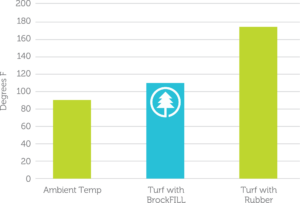
Abrasion
One of the most frequent complaints about artificial turf, especially from soccer players, is turf burn or skin abrasions from sliding on the surface. Independent testing from Labosport measures heat generated as a device slides across the turf sample using a mass and speed representative of a sliding athlete. BrockFILL generated the lowest heat score, therefore the lowest abrasion, of any infill, even crumb rubber. Better yet, abrasion is even lower when BrockFILL is damp.
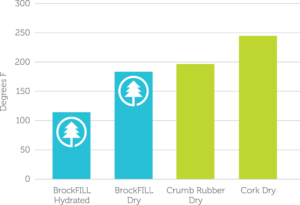
Head Injuries
The “Head Injury Criterion” Test, or HIC Test is the internationally recognized measure for the likelihood of head injury. The HIC impact test uses a Triax 2010 device that allows you to measure the force of a human head when it strikes a playing surface. By following the protocol established by the American Standard for Testing Materials for the F355-16 E-Missile we are able to determine the probability and severity of a head injury. The HIC Impact Test drops a 9.9 lb. hemisphere projectile (curved like a human head) from from increasing heights and measures the impact. The higher the Critical Fall Height, the better the surface. Good quality natural turf will produce a minimum Critical Fall Height of 1.7 Meters. Brock Shock Pads were engineered to perform more like natural grass fields than traditional turf over stone.
